A chance to explore a hidden gem at Mirranatwa in the Grampians
Towards the top of the Victoria Valley, nestled in between the Victoria and Serra Ranges of the Grampians, lies the small farming community of Mirranatwa. It is a very picturesque location with a canvas of scattered red gums, framed by the sharp escarpments of surrounding mountain ranges. A truly beautiful part of western Victoria and one that I love having an excuse to visit.
That excuse came to me last year in the form of a really nice wetland, just behind the public hall and church. For quite a few years I’d wondered about the history of this wetland because it has been managed for its conservation value, inside the wider and surrounding Barrahead property. There has clearly been a lot of love shown for this wetland. It is fenced and has some tree corridors planted around it’s perimeter. As fate would have it, Lisa McIntrye was able to put me in touch with Sam and Samantha Van Assche, who took over the property about 18 months ago. With their house overlooking the wetland, it is a really nice feature of the property, and something they are keen to learn more about and discover how best they can continue its care.
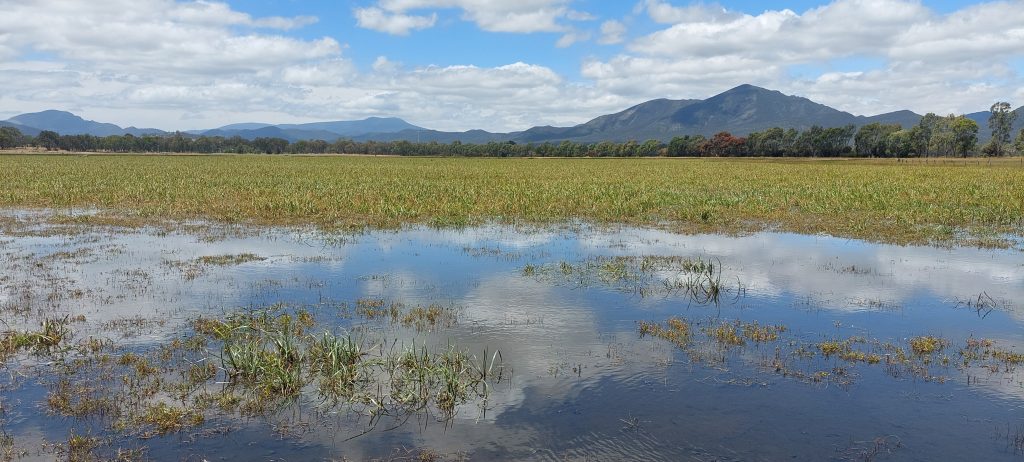
Like many wetlands across western Victoria, the area was drained and it was these drains, which are visible in aerial images which piqued my interest. On my first visit out there I was keen to have a closer look at these drains. But upon having a look it soon became apparent that a levee had been built up to do the opposite of what the drains were put in for, and that was to hold the water up – presumably to secure it as a water supply (something we have seen done elsewhere in this part of the world).
The oldest available aerial imagery (from the 1940s – see below) clearly shows the drains but it is difficult to determine whether the levee was in place then or if there was a fenceline. Regardless, the imagery shows that this wetland has been maintained while the surrounding landscape was transitioned for agricultural productivity. My initial visit also revealed that the drains were still having an effect. Water was flowing out and breach points were slowly eroding, despite obvious attempts to slow the impact. After chatting with Sam and Samantha we decided that we could undertake some repairs at these breaches and create an opportunity to make some minor adjustments to the sill of the wetland and slightly increase its water holding capacity.
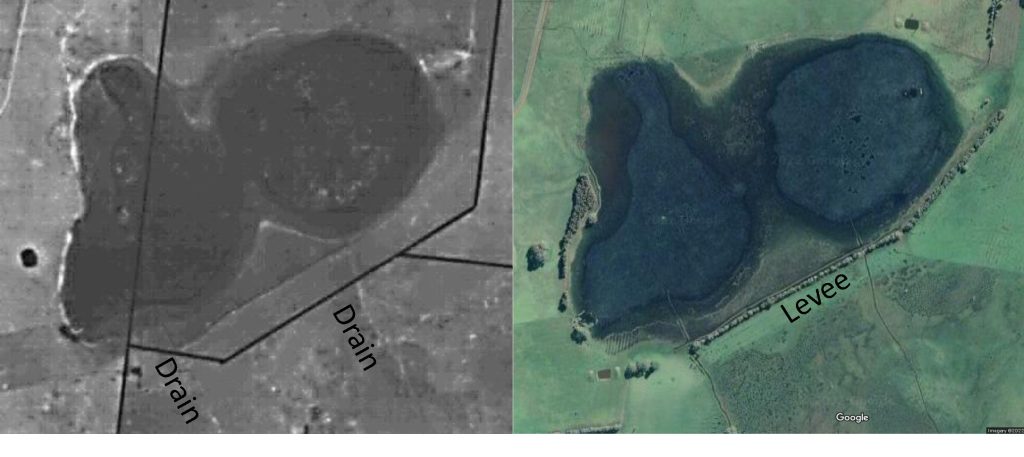
After some background investigations, looking at levels of fencelines around the wetland perimeter, and observing how the wetland responded to rainfall during 2021, we have arrived at a base level from which we can continue to maintain an optimal hydrology for the wetland. Last year was actually great for understanding how rainfall and inflows translate to water levels at this site. It started out pretty wet and the rain kept falling well into spring. I also had a look around for aquatic fauna and found some southern pygmy perch and good numbers of the rare western swamp crayfish. I’m not entirely sure where the fish have come from (the wetland dries out every year) but it’s something I’m keen to follow up. And although I haven’t heard them, I’m reliably informed that growling grass frogs (listed nationally as vulnerable) are know to occur here too.
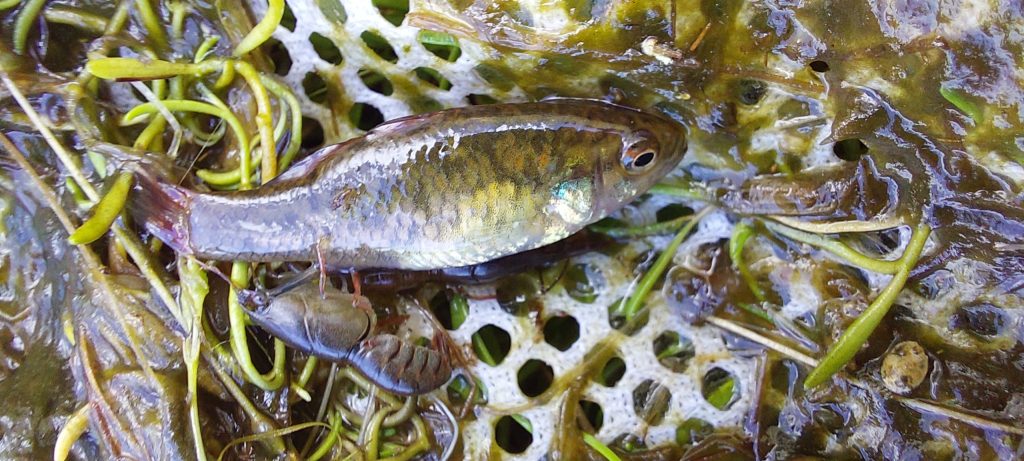
Thanks to Lisa for her coordination, a small but dedicated group got together this week and did some repair work. We started with morning tea while we waited for the rain to lift, then spent a few hours in sunshine and the beautiful valley to put in some sandbags and top dress a slightly higher but wider spillway. There were a couple of other breach points but we now have the system set up to operate through a single outlet. And as time goes on we will be able to manually adjust the height of this outlet to get it just right.
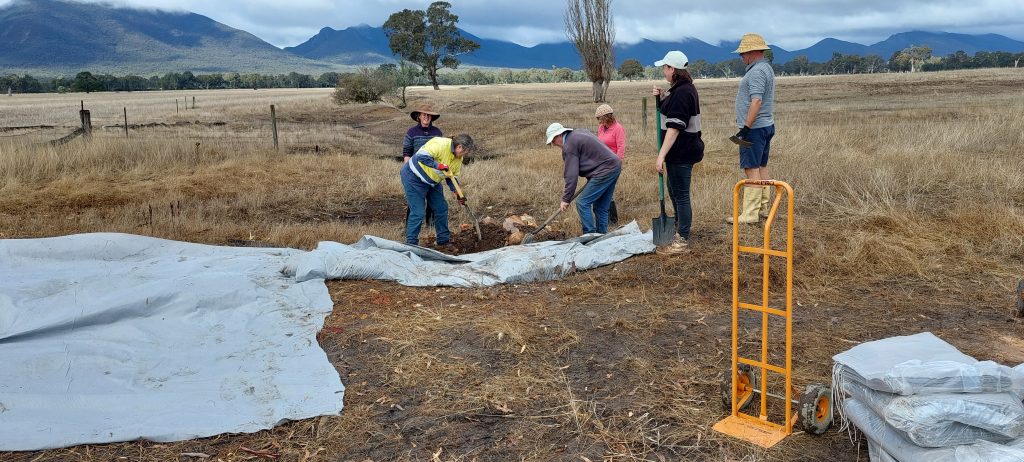
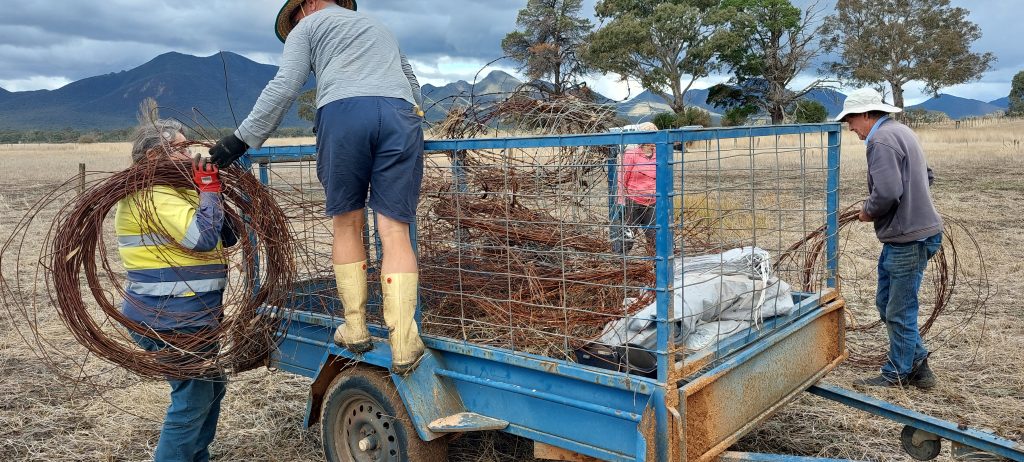
Something else I noticed on my first visit was an old fence on a corner of the swamp. While old fenceposts are great roosting spots for waterbirds, the wire can be a hazard for birds which like to move around, particularly brolgas and their chicks. So with a little more extra work after the sandbags, we managed to roll up the wire and take it away. It was a really great day out and special thanks to Bill, Shelly, Trudy-Anne, Andrew, Lisa and Rosemary for spending it with me, and to Sam and Samantha for letting us play in your very special front yard.
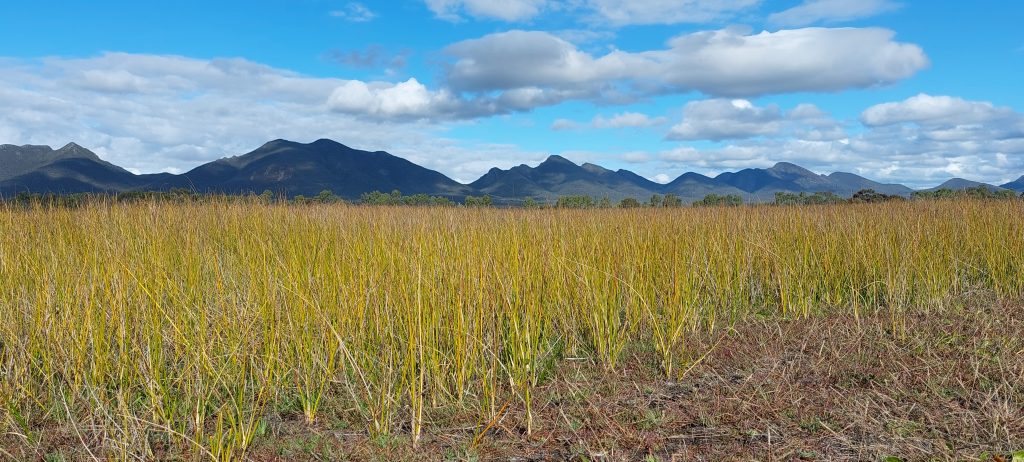
This project is part of NGT’s Grampians/Glenelg landscape wetland restoration program, funded by the Victorian Government’s Biodiversity Response Planning program.
